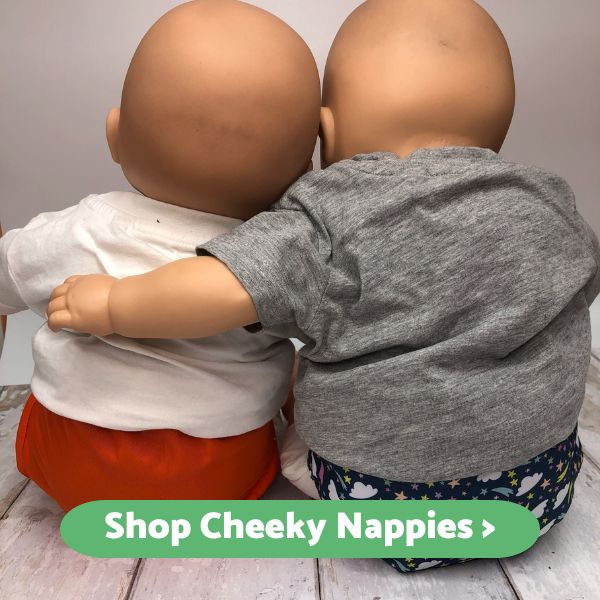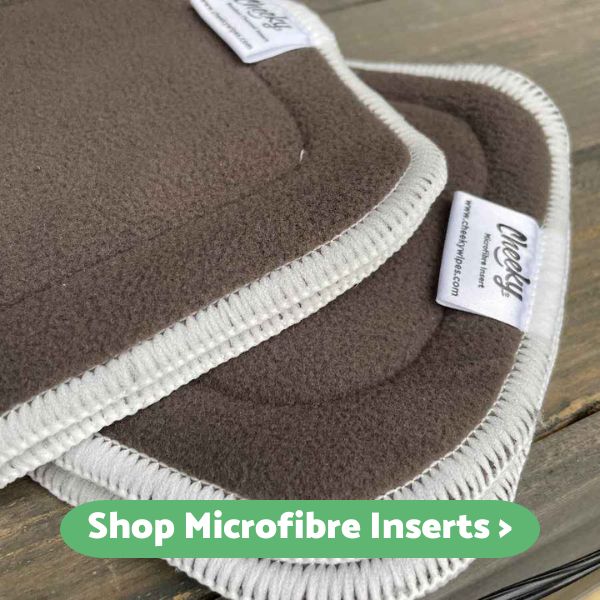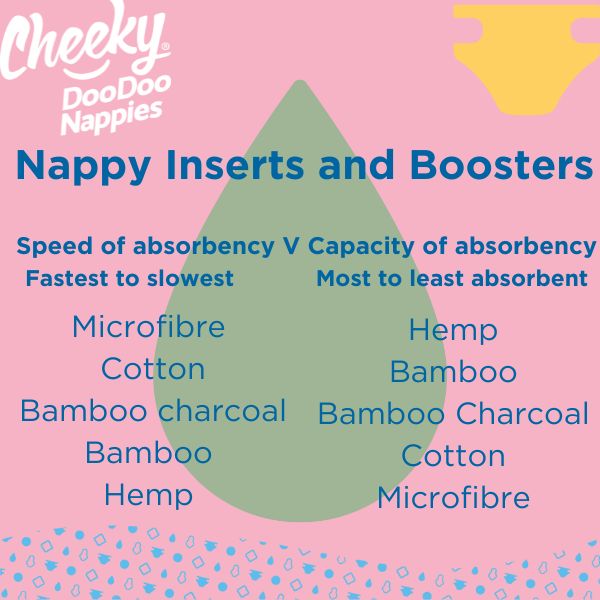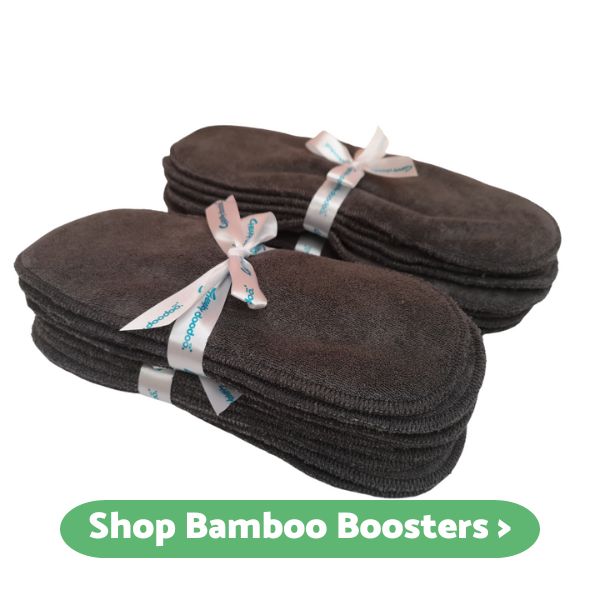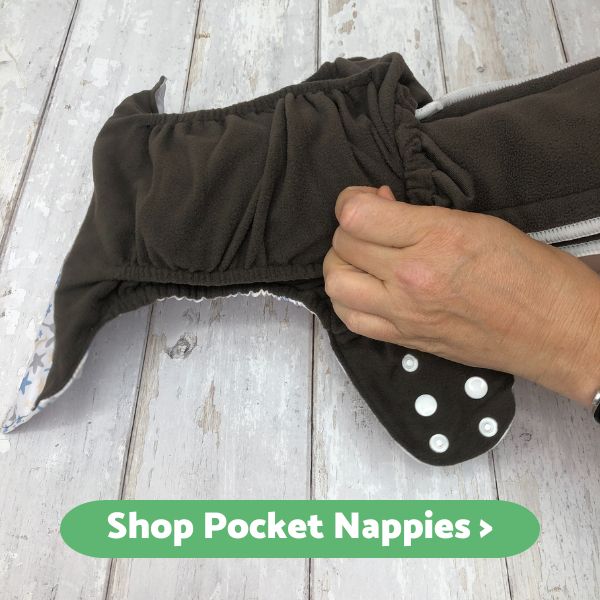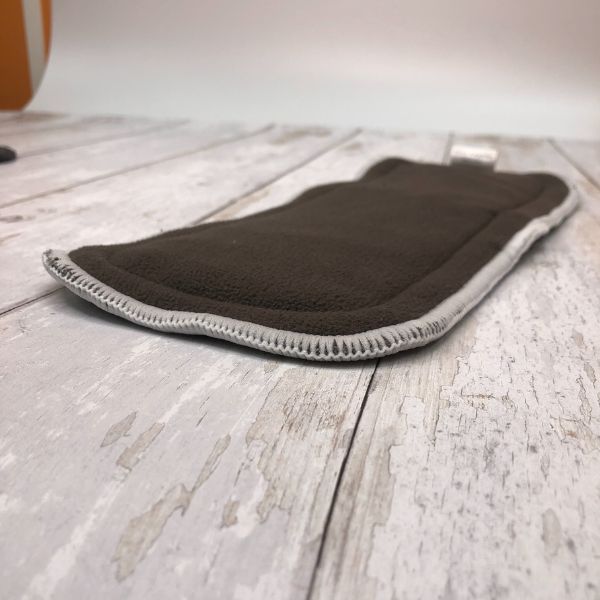Understanding Nappy Inserts: The Ultimate Guide
We are so excited here at Cheeky HQ as we have taken delivery of our pocket birth to potty nappy and I am busy getting samples out to nappy libraries for them to spread the love of cloth!
Modern Cloth nappies have so many advantages for newborns and their parents - they save money long term, are safer and more comfortable for baby, reduce the carbon footprint of parenting, and are kinder on the environment than disposable nappies.
However, the world of cloth diapers can seem complicated. We will help you to see how simple washable nappies are once you get the hang of them and how well they work when you have the right combination of absorbency for your child.
Read on to learn all about cloth diaper inserts and boosters.
What are nappy inserts?
Nappy inserts (also known as boosters) are absorbent material used to line reusable nappies. They soak up urine keeping baby dry and prevent leaks onto clothes. They are designed to go in pocket nappies, or under leakproof wraps and are not water resistant on their own.
They come in a variety of thicknesses and fabrics. They can be used alone under a wrap for newborns or used in multiples to last the night for toddlers.
How to use nappy inserts
To use nappy inserts in a pocket nappy, lie them along your forearm and slide them into the ruched pocket at the back, grip them at the front of the nappy and pull your arm out. These are easy to pre-stuff ready for use. Pocket nappies then go on just like a disposable diaper.
In fitted nappies, if the insert or booster has a stay dry top layer, just lay inside the nappy before you put it on. Stay dry inserts can be used alone inside reusable wraps too.
Add a fleece liner if the insert is not stay dry and always put a barrier between baby and microfibre as it can cause irritation.
The different types of nappy inserts
There are many different types of nappy insert that you can choose from, each with their own unique set of pros and cons. We will cover each fabrics absorbency level, comfort, how long it lasts, the average cost, availability, and eco friendliness.
Microfiber Inserts
This is the quickest absorbing booster. It soaks up moisture quickly but doesn't hold a large capacity in comparison to its density. Like a sponge, it will leak fluid back out once full. This can lead to compression leaks.
This insert is best placed inside a pocket diaper closest to baby but under a fleece liner if needed as it feels scratchy and is SO absorbent it can dry babies skin.
Microfibre boosters are cheap to buy and as they are made from man made materials they are the least environmentally friendly insert.
These are not for you if you are aiming to use organic materials.
Most microfibre nappy inserts are made using recycled material to counteract this. This is the fastest drying insert so has a quick turn around to be back on baby.
One upside of microfibre is that you won't have to use a disposable liner. That's because poo won't stick to microfibre (which is why they are used for reusable liners).
Cotton Nappy Boosters
Cotton is the second quickest to absorb fluids and can be layered up and stay relatively thin whilst still absorbing well - bear in mind most of the fabrics used for bathing and washing are cotton.
They can feel rough in hard water areas but can be tumble dried to soften them. Cotton inserts are inexpensive to buy and readily available.
Cotton boosters are made from natural fibres, and are more eco friendly.
They're safe to have right next to babies skin as they wick moisture away quickly and allow the skin to breathe. It is biodegradable so can be composted when at the end of its life. Cotton dries relatively quickly and is a hard wearing fabric. Organic cottons are readily available.
Bamboo Inserts
Bamboo boosters are super soft, breathable and gentle on babies skin. Bamboo is an odour resistant fabric so ideally suited for use in washable nappy. Like cotton, it can be recycled easily and is biodegradable.
As it is a soft fabric is breaks down more easily so is not as hard wearing as cotton. It drinks slightly slower than cotton but holds a lot more than microfibre so is ideal further away from baby. Bamboo takes longer to dry than cotton and microfibre.
Bamboo Charcoal Inserts
Bamboo charcoal is purported to help with odour control and has antibacterial qualities. These inserts often have bamboo on the outside with a microfibre core.
Hemp Inserts
Hemp nappy inserts are also made from natural fibers, super absorbent and antimicrobial. It holds twice as much fluid as microfibre so is great at night time.
They get more absorbent over the first 8-10 washes but can be used before this, they absorb more slowly so are better behind another absorbent insert. It is the most expensive insert and tends to harder to source. Hemp dries the slowest.
Other inserts and boosters
Zorb is a blend of bamboo, cotton, microfibre and viscose and was designed specifically for cloth nappies to be more cost effective and to improve performance. Hailed as a miracle fabric that absorbs 20 times more moisture and repels smells and detergent build up. As it is not woven and is a lining material, it will come sandwiched between other fabric.
Disposable hybrid inserts go inside specifically designed wraps whose brands also supply reusable inserts. This allows for freedom on holidays or days out when carrying or washing nappies would be tricky. The insert can be thrown away like a disposable nappy, wipe the cover and reuse.
Disposable inserts are also useful over a tummy bug or illness to avoid needing to strip wash your nappies at the end.
Cotton wipes are great for heavy wetters or toddlers who are starting to be able to hold their bladder then flood nappies. Fold one in the wet zone to boost absorbency in a hurry.
How many nappy inserts should I use?
How many nappy inserts you should use will depend on what you are using the nappy for and how long you would like it to last. For a tiny bladdered newborn you can even use a cheeky reusable wipe wrapped in a muslin inside a wrap alone, for a toddler who guzzles milk all night you might want to triple boost so you don't have to change in the early hours.
Inserts and boosters don't have to be reusable nappy brand specific, you can mix and match any and all to go inside your chosen nappy.
What is the most absorbent nappy insert?
The most absorbent nappy insert tends to be hemp or bamboo, and often a blend of the two. Layering up microfibre then hemp will give you a nappy that soaks up urine quickly and then holds alot.
Which type of nappy is the most absorbent?
The most absorbent nappies are fitted sized nappies that are made exclusively with bamboo. The entire nappy is absorbent and they are great for overnight with a waterproof wrap as a night nappy.
If you found this blog useful you may like -
Fact Vs Fiction: Top 10 Cloth Nappy Myths BUSTED
The Different Types of Reusable Nappies
How To Stop Reusable Nappies Leaking
Pocket nappies : Everything you need to know
Eco nappies V Reusable nappies
If you want to know more about making the switch to reusable nappies, please contact the team. You can drop them a line or use the online chat. The team all use the products themselves and nothing is too much information. We all love to overshare based on our own experiences.
About the Author: Kirstin loves living by the sea with her three children. As part of Cheeky Wipes customer service team she spends most days talking about periods, poo, and pee. In 2021 Cheeky wipes was honoured with a Queens Award for Enterprise in Sustainable Development celebrating their hard work over the last 13 years.
